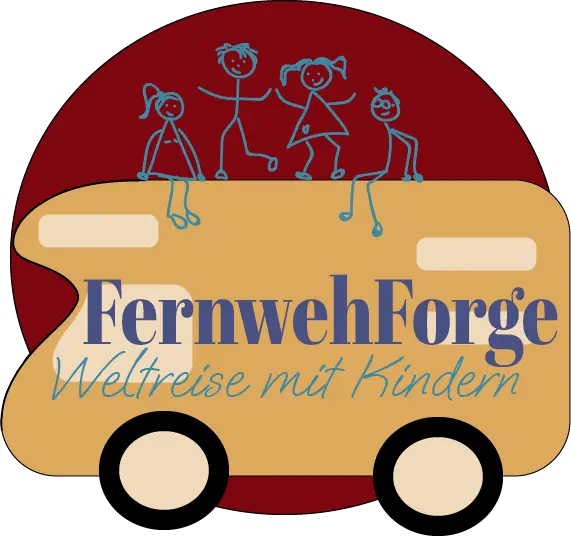
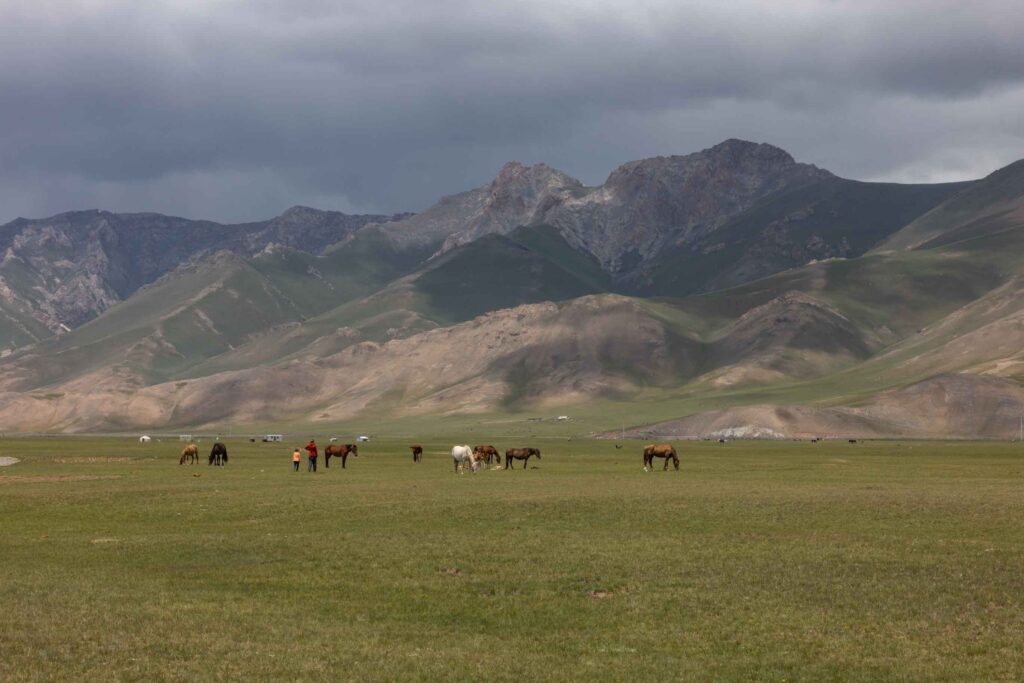
03. – 15. Juni 2025
Kyrgyzstan—the land of horses, mountains, lakes, and yurts. We had big plans: wanting to explore widely, take small hikes through wild nature, and go swimming in Lake Issyk-Kul. But things turned out completely differently.
Let’s start at the beginning. After finally crossing the border near the end of the Pamir Highway, we were greeted by a snowstorm. About ten minutes later, we were suddenly out of the snow. At the border, we met an experienced traveler named Aly and his Toyota. He found our first overnight spot in Kyrgyzstan: a meadow beside the road. A few men came by, and after a brief chat, they confirmed we could camp there.
The next morning, the landscape revealed itself in all its glory: vast grasslands adjoining towering, snow‑clad mountains. That was the Pamir—the place we had just come from. Not far from our campsite, several herds of horses grazed peacefully. What a sight!
The lioness and I moved closer for a better view. Some men were catching the foals and tying them to a long chain, then rounding up the adult horses one by one, only to release them again. We wondered what was going on. One of the men noticed us and came over to explain: they were herding the horses for milking. The family owned two herds, each with about ten mares and a stallion. During the day, the foals are tethered so the herd stays nearby; in the evening, they’re released and graze in the steppe. The next morning, the herders collect them by motorcycle.
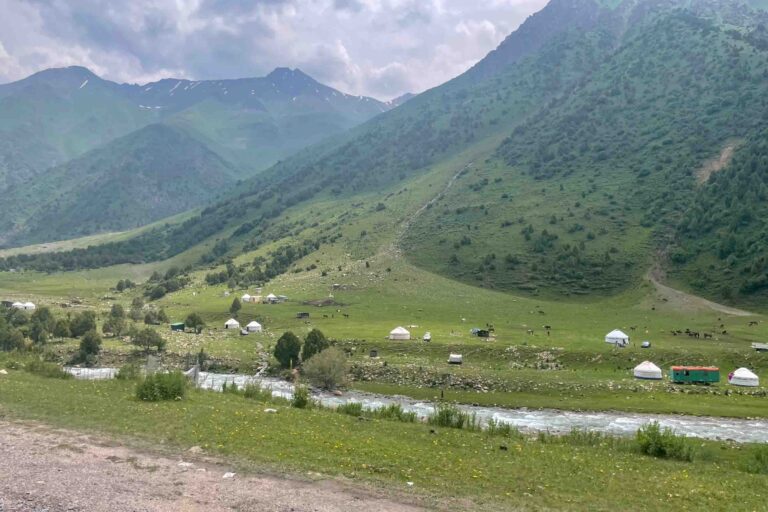

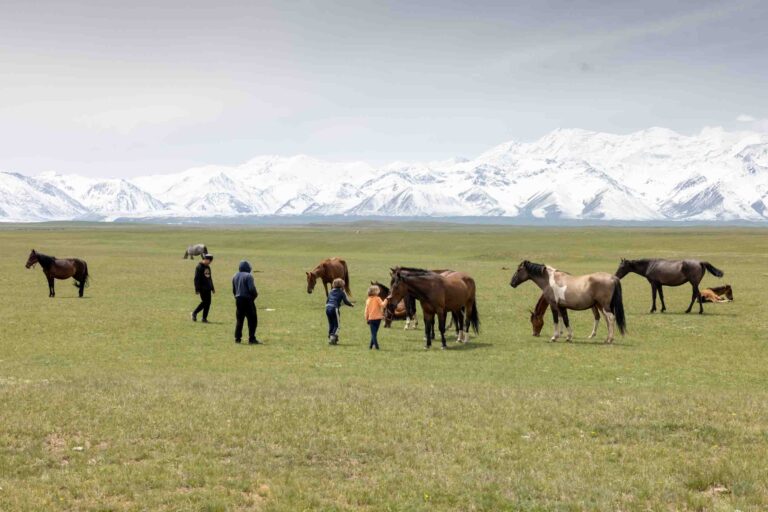




We watched the milking, tasted a cup of fresh horse’s milk—it tasted like warm, slightly sweet milk—and were then invited to try kymyz, fermented mare’s milk. Fresh, it resembles liquid yogurt; after a few days, it develops alcohol. Tiny black specks floating in the fresh kymyz are the settled fat. While eating fried dough patties called kuymag, we chatted about horse breeding. The herd’s stallion had a GPS tracker so they could locate the group—though the herders usually know the animals’ favorite spots well enough not to need it. Each horse requires a kind of “steppe tax” of about $1 per year to be paid to the government. In summer, each mare is hand‑milked four to five times a day, producing roughly a liter per session. The milk’s price is comparable to cow’s milk in Germany.
I could have watched the grazing horses forever. The foals lay down to sleep while the men began milking the herd a second time.
Our journey continued. We drove our motorhome through breathtaking landscapes—passing yurts, horse herds, mountains, and streams. In Osh, we were meeting Aly at one of Southeast Asia’s largest markets. The contrast to the calm and cold of the Pamirs was astounding: it was hot, crowded, and chaotic.
Looking for parking, we somehow ended up stuck in a narrow alley—blocked by cars in front and behind.
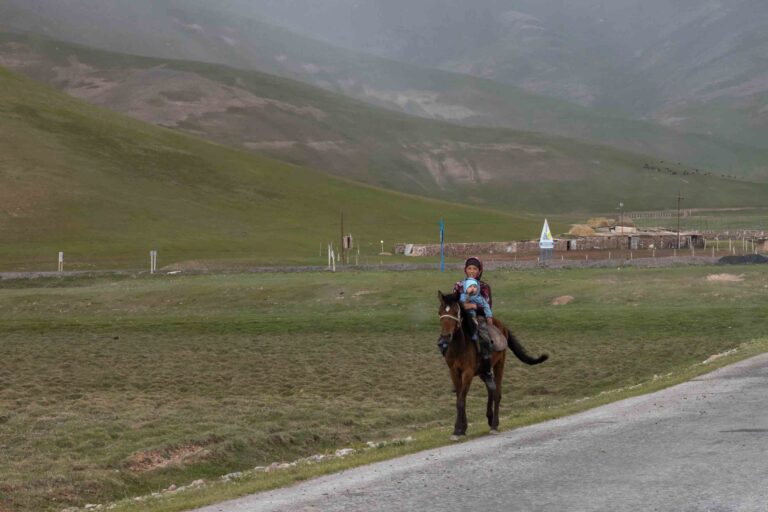

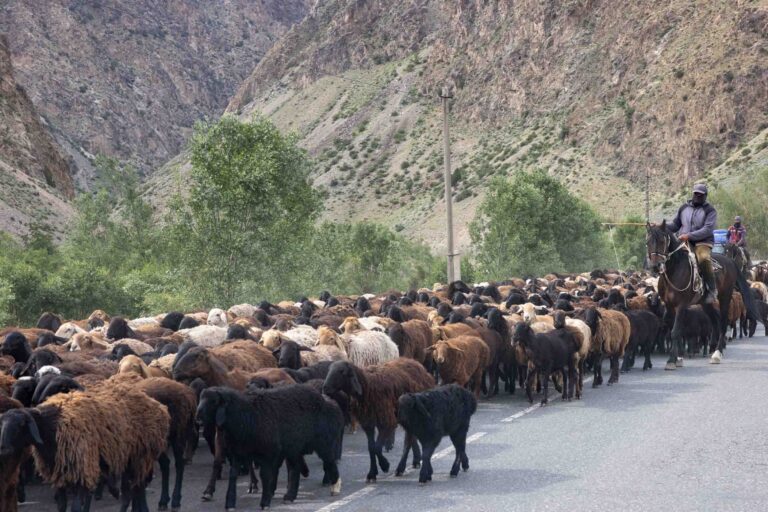
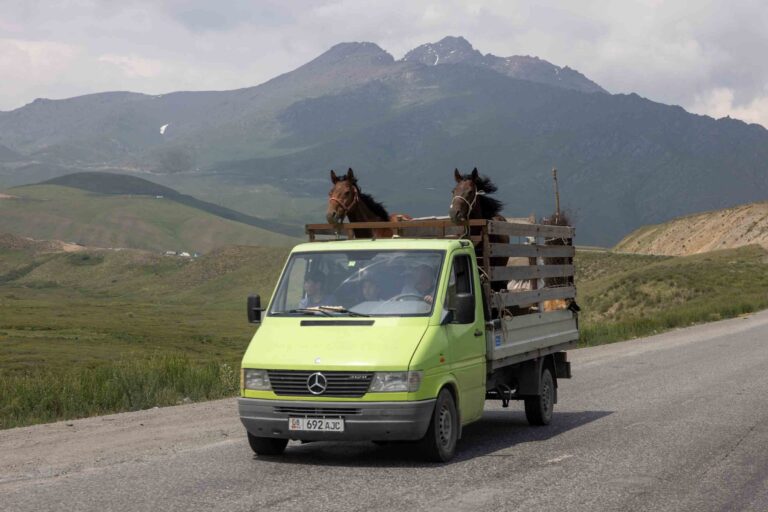

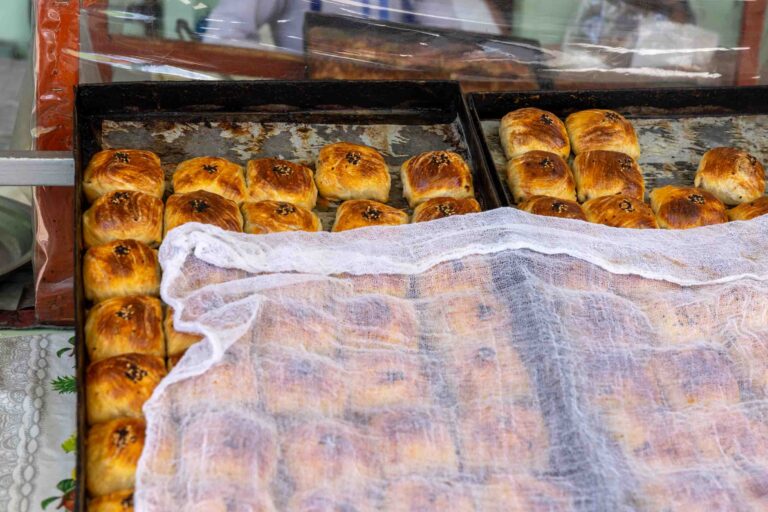



I stood next to the RV, unsure where to wave Philip to maneuver. A bit forward, up a small hill in front of a little store, might allow a turn—but as Philip drove, wheels spun, and we got stuck crosswise, blocking the alley now completely. People got out of their cars, amazed at the stranded motorhome. Thankfully, no one got angry. Everyone pitched in: one person contacted the owner of the car parked behind us, others helped push, everyone yelled to drive somewhere. We finally managed to turn around as Philip let air out of the tires. Then, all the other cars reversed out the alley, and we were freed. We were quite embarrassed—especially since a sign at the alley entrance read “Trucks prohibited”—but we’re no real truck, right?
Eventually, we found parking and met Aly at the bustling market. After soaking in the colorful atmosphere, we went for a meal.
But soon, we were eager to leave the city behind—it was too hot, too crowded, too tight. We longed for the mountains and horses!
We were happy there, contemplating whether to ask one of the families staying in a yurt if we could join them for a few days. Life among horses and nature was incredibly appealing! Then suddenly, descending one of the many hills—using engine braking, of course—we heard a terrible sound. The engine died. Philip eased the motorhome to the roadside in a curve. Not good.
He opened the hood and feared the worst: the timing belt had come loose. But we had had it replaced in Dushanbe—at a workshop highly recommended by other travelers!


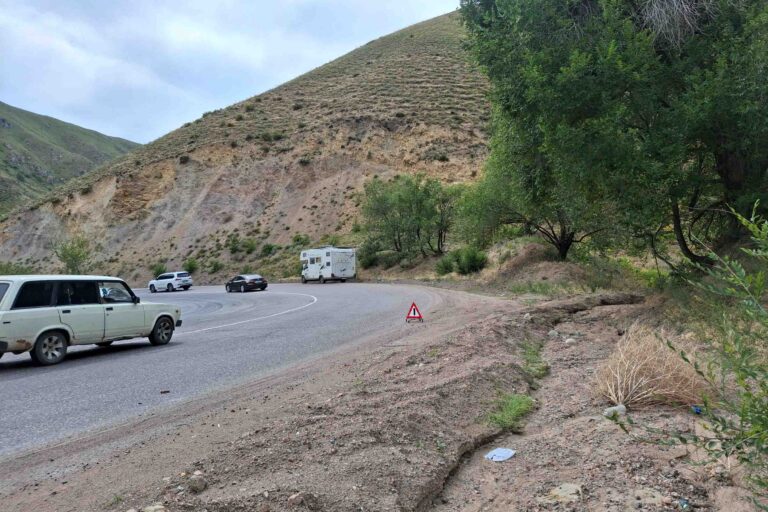




With no cellphone reception, we waited until a passing car promised to call a tow truck once they had signal. Others stopped too, offering to fix poor Lucas on the spot—but Philip suspected catastrophic engine damage.
Soon, the men emerged from under the hood, hands full of gears and screws. The timing-belt pulley had worked itself loose—a mistake by the workshop in Dushanbe! In Germany, that would likely spell doom for our motorhome, but here, the men assured us the nearby town’s workshop could fix it.
The tow truck arrived—smaller than Lucas —so we doubted it would fit. But the men wanted to try and what option did we have?
Our wheels stuck out over both sides, and the rear bumper just about scraped the road—but they said it’d hold. We rode along inside the RV on the tow truck, the motorhome swaying alarmingly. In addition to seatbelts we would have liked to strap helmets on the kids—just for safety.
At a snail’s pace, we rode for about an hour to the workshop. The mechanics dove into the engine. It was June 6. We had to be at the Chinese border in ten days—900 kilometers away, crossing Kazakhstan, and our China tour was already booked and paid for. The mechanic said, “Then we’ll have to hurry.” Really?! Would they manage to fix this major break down in time? And how much would it cost?

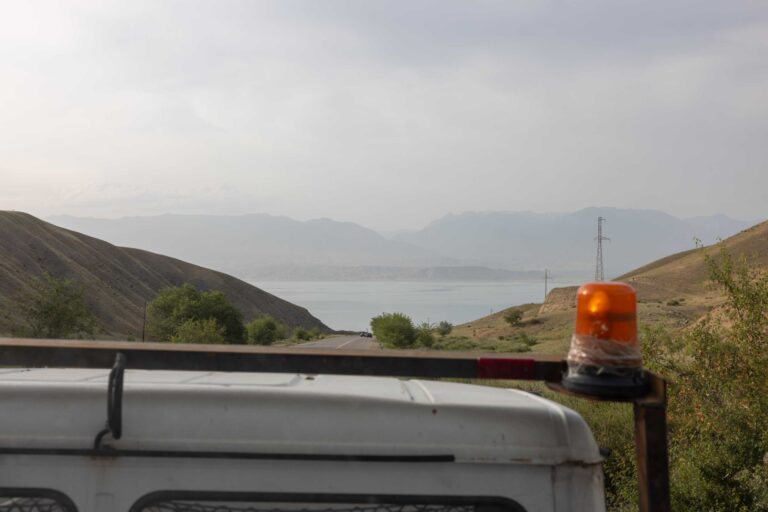
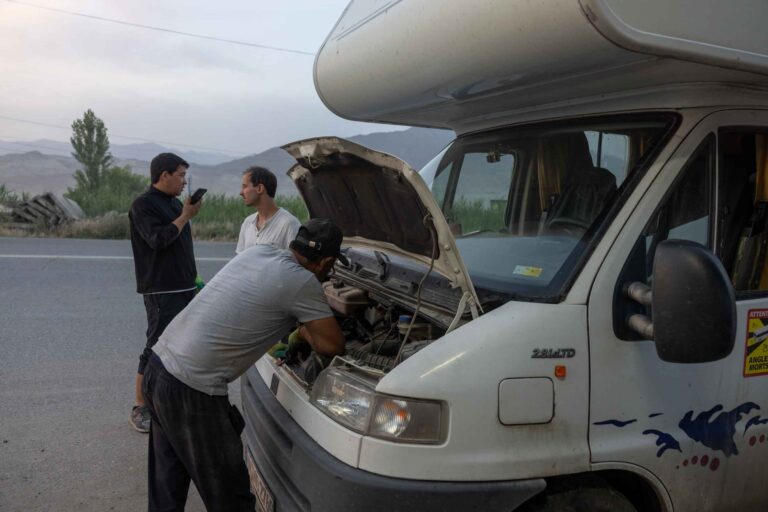

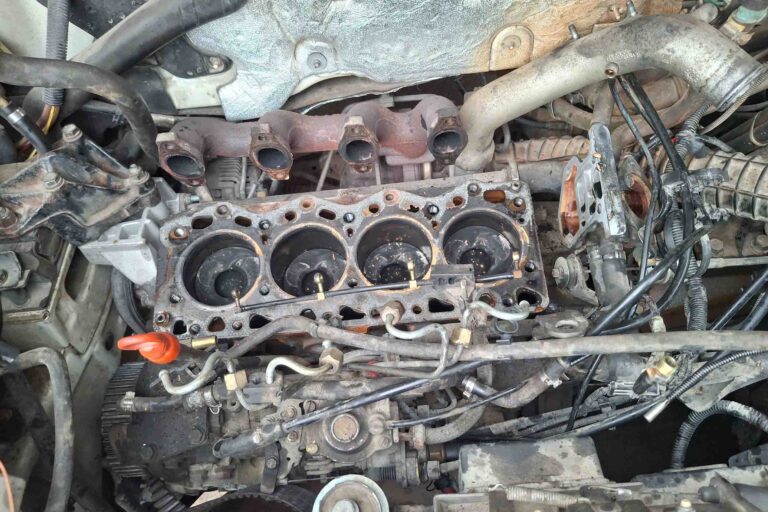

First, they had to remove the engine to assess the damage. That evening, they worked until 3 AM with hammering, banging, and loud music—enough to keep me awake, though the rest of the family slept.
At 7 AM the next morning, the workshop manager knocked on our door—he had to drive to Almaty, Kazakhstan, to source parts. We needed a completely new cylinder head. He quoted 1000 € for disassembly, parts, and reassembly. We approved, and he sped off—600 km to Almaty—personally fetching what was needed. Incredible service!
We spent two nights in the tiny town, bored and bickering over staying in the workshop instead of enjoying Kyrgyzstan as planned. We dined at every little restaurant, found a river spot to swim in, and played Carcassonne. We anxiously wondered if the repair could be done in time. We informed the China tour organizers that we might not make it—after all, our vehicle was the only one with an extra passenger seat for the mandatory guide. If we would not make it, the whole group of 8 vehicles would not be able to drive through China!
Then the hammering and wrenching resumed. Najr—the mechanic—returned with a rebuilt used cylinder head from Kazakhstan.



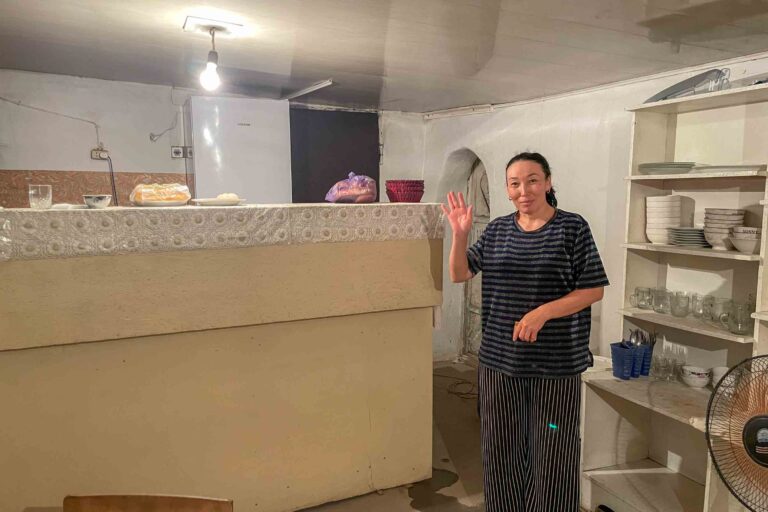



After five days in the workshop, our engine purred like new! I don’t think I’ve ever been so relieved!
Even better, a familiar green MAN truck rounded the corner—it was Kasia and Mikkel! We hadn’t expected to meet them again. They tell their story of crossing the Pamir mountains and how they are heading to Almaty too—also looking for a workshop, as they had been driving under 60 km/h in limp mode for some 1000 km!
Najr sent us off on a test drive with the “new” engine—only then were we allowed to pay. Overjoyed, we said our goodbyes. In Almaty, we prepped the motorhome for China: at the auto parts market, we found the squeaky fan belt, fixed our horn, and bought new tires—the old ones hadn’t made it all the way to Almaty. Just before the city, I heard a bang. Philip said, “No, that was the truck that just passed us!” I said, “No! Stop! That was us!” Sure enough, the tire that had been sitting on the edge of the tow truck was torn apart. We unboxed the spare we previously removed on the Pamir (because it was too worn). Very slowly, we limped to the tire shop—and finally were ever so glad to have five new wheels!
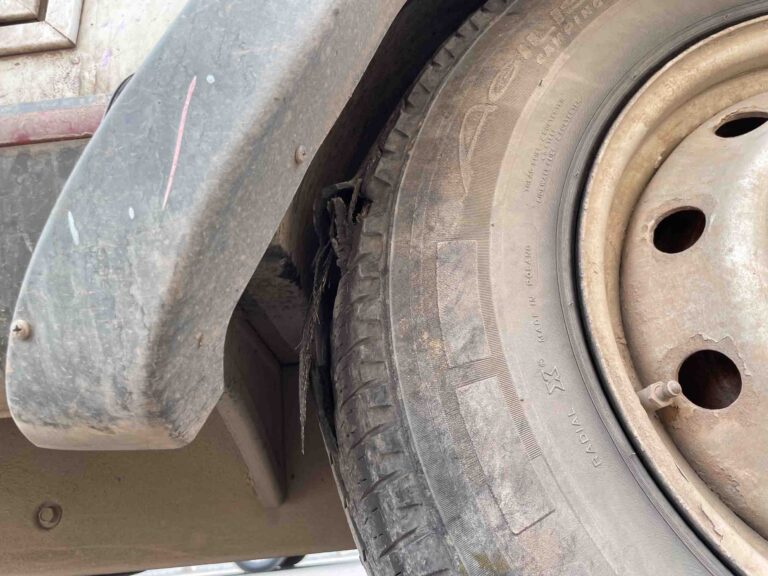


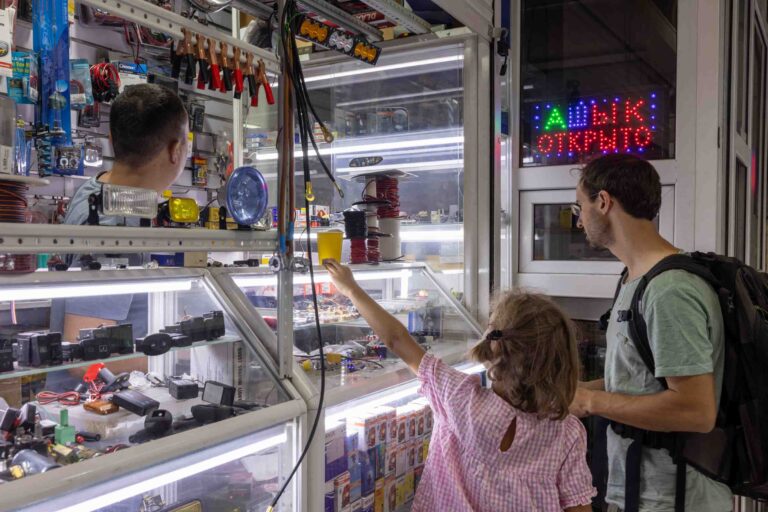

Not just the motorhome Lucas needed new shoes—the kids did too! Both had lost two shoes! I still can’t believe it. One of the Lioness’ shoes escaped unwitnessed at a rest stop; an other one was lost in a Tajik river! The Panda then lost two of his shoes in the next lake and has been wearing heavy hiking boots ever since. The Lioness either goes barefoot or with mismatched shoes. Everyone we met was incredulous. On the Pamir Highway, the Lioness was even gifted shoes—but they fit neither her nor the Panda.
In Almaty, after long searching, we managed to find sandals for both kids—and Philip found a new pair too!
Fully outfitted and renewed, we were finally ready to continue our next adventure—through China!
Kyrgyzstan is now at the top of our list of countries to revisit after our world trip—the beautiful lakes, a night in a yurt, horses forever—we’ll definitely be back for that!
If you ever want to explore Kyrgyzstan, make sure to come in the summer. The children have three months of summer vacation from June to August. Families use this time to pack up their yurts, kids, and horses and head to the mountains. It’s only in the summer that you can see all the yurt camps scattered across the mountains. After the holidays, everyone returns to the city.
